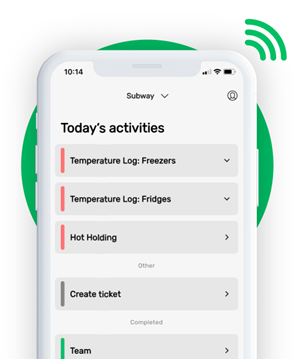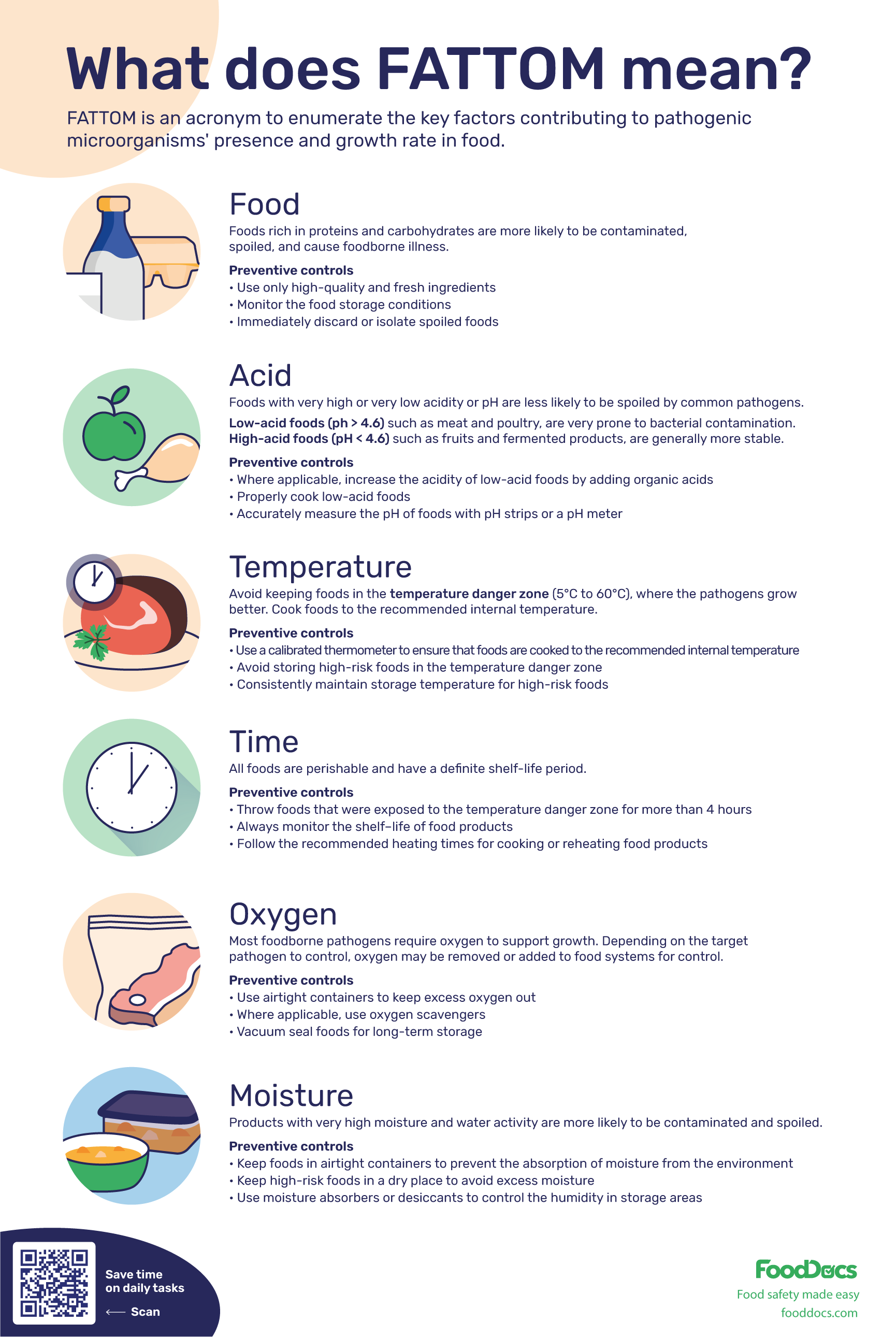WHAT DOES FATTOM MEAN? FREE POSTER
Feel free to use our free FATTOM Chart.
Just download and use.
What does fattom mean
Food handlers are always in constant combat with foodborne pathogens. The majority of food-handling practices all aim to control the growth of these pathogens. All preventive controls for foodborne pathogens revolve around controlling six major factors - FATTOM. Controlling these factors can effectively keep your raw materials and food products safe for human consumption.
Learn what does FATTOM mean from this article and how to control and efficiently monitor them with our smart Food Safety Management System. Also, read about how can you benefit from downloading the FATTOM poster.
What does FATTOM mean?
FATTOM is a mnemonic device used to list the main factors that significantly affect the growth rate of pathogenic microorganisms in food.
FATTOM stands for:
F - Food. Refers to the food that provides the microorganisms with nutrients. The higher the nutrient content of food, the better the growth of microorganisms.
A - Acidity. Refers to the pH level of the food. Most pathogenic microorganisms thrive best in neutral pH.
T - Temperature. Microorganisms grow best at room temperature or within the temperature danger zone of 5°C to 60°C.
T - Time. Refers to the duration that food spends in unfavorable conditions.
O - Oxygen. Different microorganisms have their own oxygen requirement. Some can only live in its presence and will immediately die in vacuum conditions.
M - Moisture. Refers to the amount of available water inside and surrounding the food. Pathogens prefer moist environments.
Each factor is important in food safety. Food businesses control each factor to limit the growth of microorganisms in food and extend their shelf-life. Most food safety controls and established health codes by food agencies are based on controlling the FATTOM factors.
Understanding these factors can help food businesses ensure food safety and protect consumers from foodborne illnesses.
What is the FATTOM chart?
The FATTOM chart is an informative tool that lists six main factors that affect the growth of microorganisms. The chart also explains how harmful pathogens are affected by every factor.
To help food handlers, the chart includes appropriate preventive controls to limit the growth of harmful microorganisms.
Bacteria and other foodborne pathogens use food as their source of nutrients. In the food industry, the presence of pathogens can indicate poor food handling and lead to foodborne illness, of which the most common ones include Salmonella and E. coli. This fact makes perishable foods very prone to contamination and spoilage.
Food handlers are responsible for controlling bacterial growth and protecting their customers from foodborne illnesses. The best way to do this is to understand the factors that affect their growth and use this information to establish proper controls.
The FATTOM chart is one of our many free food safety posters available for download.
How do FATTOM factors control food safety?
The factors under the acronym FATTOM have been established by food science experts and are proven to be significant in controlling bacterial growth. They are always considered for establishing preventive controls and ways to preserve food correctly.
Below, we briefly discuss how each factor affects the risk of food spoilage.
Food
Bacteria and other foodborne pathogens use the components of food as sources of nutrients for growth. Generally, any food rich in simple proteins and carbohydrates is more likely to be contaminated and spoiled by pathogens. Perishable foods typically nutritious, such as the following:
- Meat
- Leafy greens (e.g., vegetables) and fresh fruits
- Poultry
- Starchy foods (e.g., cooked rice or pasta)
Such types of food require proper handling to prevent food poisoning. Perishable foods are also called TCS foods or time/temperature control for safety foods, as they require close monitoring to maintain safety.
Acidity
Different foodborne pathogens have specific pH level requirements to survive. Acidic foods are less likely to be spoiled as most foodborne bacteria and viruses prefer neutral pH.
Low-acid foods, such as fresh vegetables and soy, are more prone to bacterial contamination, making food unsafe for consumption. As such, acidification of foods is sometimes performed, which is done by adding organic acids to reduce the pH level of foods. This is a common practice for producing canned foods.
Temperature
Controlling proper temperatures for food is one of the most effective methods to limit the growth of microorganisms in food. Temperature can be controlled in different ways. As most foodborne pathogens do not grow in very high or shallow temperatures, perishable foods are commonly held in these conditions to prolong their shelf-life.
Most preventive controls in the food service industry involve controlling the temperature during food storage or processing. Operations such as cold-holding and hot-holding are performed to limit the growth of pathogens, whereas freezing is done to stop their reproduction completely while frozen.
Time
This factor refers to the time a food spends in the temperature danger zone. The rate of bacterial growth can double in this condition. The general rule is that perishable foods should not stay in the temperature danger zone for more than 4 hours. The longer they stay exposed to this condition, the more likely they will get spoiled.
You can also see and download our free poster for the temperature danger zone from HERE.
Moisture
Moisture refers to the water content of foods and their surrounding. Bacteria and other pathogens grow best in very moist conditions or foods with high moisture content.
You can find more information about how each FATTOM factor can affect food safety from our detailed article about FATTOM factors. This article also includes information on how to control bacterial growth efficiently.
Why do you need to control FATTOM?
Controlling FATTOM is a critical task for food business owners. You cannot expect to continuously operate if you do not have these factors under control.
Specifically, controlling FATTOM can help you achieve the following benefits:
- Food safety. Controlling FATTOM means minimizing the growth of foodborne pathogens. This means that your foods are protected from factors that will make them unsafe for consumption.
- Cost saving. When your team can effectively control the growth of microorganisms, this means that you can optimize the use of every ingredient and product in your operations. Foods will not spoil earlier than their indicated shelf-life dates.
- Compliance with regulations. Food safety agencies and health departments strictly require for food businesses to control the growth of harmful pathogens in their operations. Businesses with proper preventive controls comply with essential food safety regulations.
- Increased consumer confidence. Food businesses that can consistently control FATTOM factors can continuously serve safe foods. This shows consumers your commitment to protecting public health, which can be translated to higher profits.
Preventive controls that relate to the FATTOM factors are very common in food businesses. Controls can include proper storage, cooking to the correct internal temperature, cleaning storage areas, and maintaining proper storage temperature.
Favorable conditions for prolonging the shelf-life of foods must be consistently maintained through comprehensive monitoring.
At FoodDocs, regular monitoring and executing food safety tasks are made significantly easier. With just a couple of clicks and 15 minutes, you can set up a comprehensive food safety management system that is accessible anywhere and anytime. This solution gives you a great overview of everything happening regarding food safety, comes with thorough instructions, and reminds your food workers when and what tasks they should accomplish in a day.
Learn more and sign up for a 14-day free trial from here!
Who needs to control FATTOM?
All food handlers are required to control FATTOM factors. This includes food handlers from food service, manufacturing, and retail. All related operations are critical for any food business as they ensure food safety and protect public health.
Food handlers are expected to understand how each factor in the FATTOM acronym affects the growth of bacteria. They are also responsible for ensuring that controls related to these factors are appropriately executed and monitored.
What are the benefits of a FATTOM chart?
Having a FATTOM chart in your kitchen area can help food handlers in ensuring the safety of your foods and operations. This chart is a versatile tool that can be used by any food business.
Specifically, the FATTOM chart can provide the following benefits for food businesses:
- Reminder. When placed in a clear location, the chart can serve as a reminder for food handlers of important factors that will help control and prevent food spoilage.
- Accurate reference. Food handlers can use the chart as a reference for the proper conditions required to maintain food safety. The FATTOM chart was made based on scientific evidence and established safety regulations for food safety, so food handlers can ensure that their actions are properly guided.
- Material optimization. When food handlers consistently follow the preventive controls included in the FATTOM article, raw material use can be optimized to its full potential. Foods can be used before they spoil, and food businesses can ensure that their products will remain high quality.
- Employee training. The FATTOM chart can be used as a reference for training employees. Food safety managers can use the chart to introduce the sources, consequences, and controls related to the growth of harmful bacteria in food.
With the use of the FATTOM chart, food business owners can ensure that their employees are consistently working to control the unwanted growth of pathogens.
The FATTOM chart is just one of our many useful food safety charts. Visit our HACCP plan template hub for more free food safety tools for your business!
To improve the efficiency and effectiveness of preventive controls against bacterial growth, choose to use our smart software solution from FoodDocs! Find out how you can get a smart Food Safety Management System in just 15 minutes in the next section.
How to use the FATTOM poster?
To make the most of our free FATTOM poster, operate as follows:
1. Download the poster from above by entering your email and hitting "download."
2. Find the downloaded full-quality file from your downloads folder. Print the poster.
3. Attach the poster on the wall of your kitchen and/or other working areas where food workers can clearly see it.
4. Briefly explain the idea of the poster and summarize the importance of controlling FATTOM factors to your employees.
5. Be always up to date with our new free templates, tools, and posters from our template hub and through the newsletter that we will send you once a month to introduce our new content.
How to help my team control FATTOM?
Understanding how FATTOM affects food safety is just the first step to actually maintaining consistent compliance. To become effective, food handlers must also continuously ensure that preventive controls that aim to control FATTOM factors are done correctly by monitoring them. While the FATTOM chart is a very useful tool to remind food handlers of the preventive controls and parameters, using the chart is not enough to control bacterial growth.
With all the many operations related to the FATTOM factors, it will be hard for a limited number of employees to stay on top of monitoring them. You need a smart solution to help you intuitively monitor every food safety task and ensure compliance throughout your operations.
Using our smart Food Safety Management System, you can get all of the benefits that a FATTOM chart offers and more at the palm of your hand. Our smart software offers the following:
- Get automatically generated monitoring logs and checklists to help you monitor operations for controlling FATTOM factors. Some of the most essential logs and checklists that our system can generate for you include the following:
- Cooking temperature log
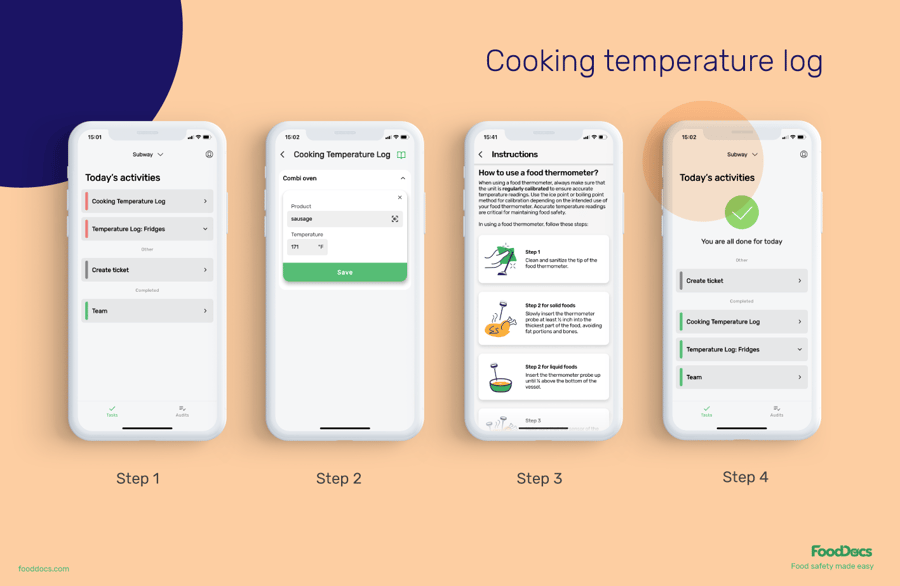
-
- Fridge temperature log
- Receiving temperature log
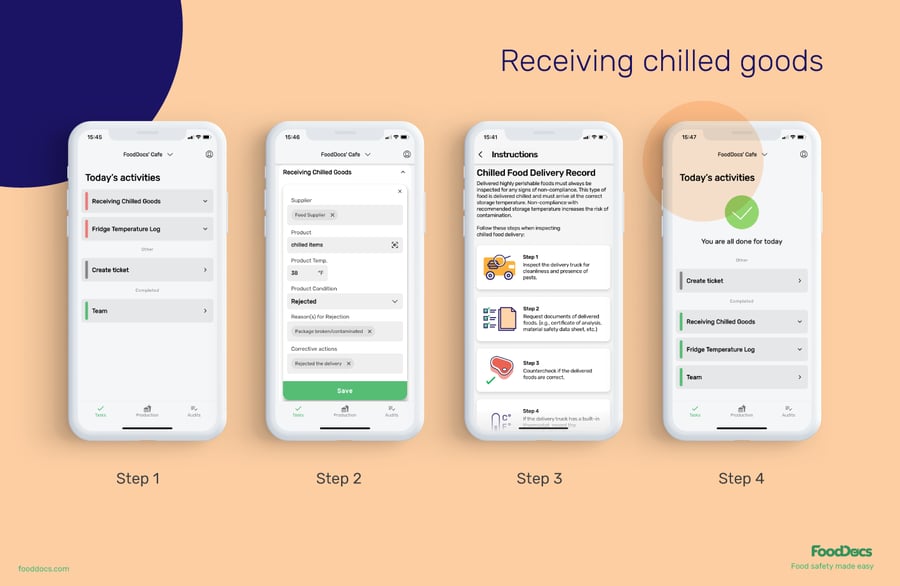
-
- Employee hygiene checklist
- Use our mobile app's smart notification system to receive intuitive alerts on food safety tasks that need to be done. With this feature, you can ensure that tasks are done on time before pathogens even get the opportunity to multiply.
- Use our Traceability System, which can help you keep track of your raw material and products' shelf-life. With this feature, you can ensure that all of the ingredients you use are still safe and high-quality.
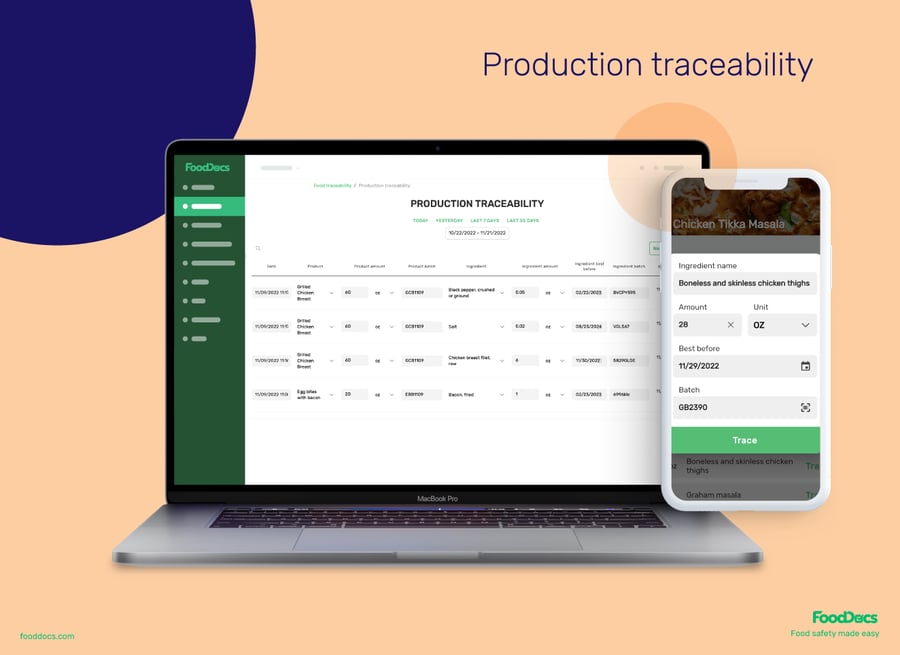
- Integrate our smart software with IoT sensors in your machines. Using this feature, information can easily be logged into our system, and all you need to do is to verify it for accuracy.
Our smart Food Safety Management System is more than just software that can help you control FATTOM factors. Our software can also help improve efficiency in managing food safety tasks:
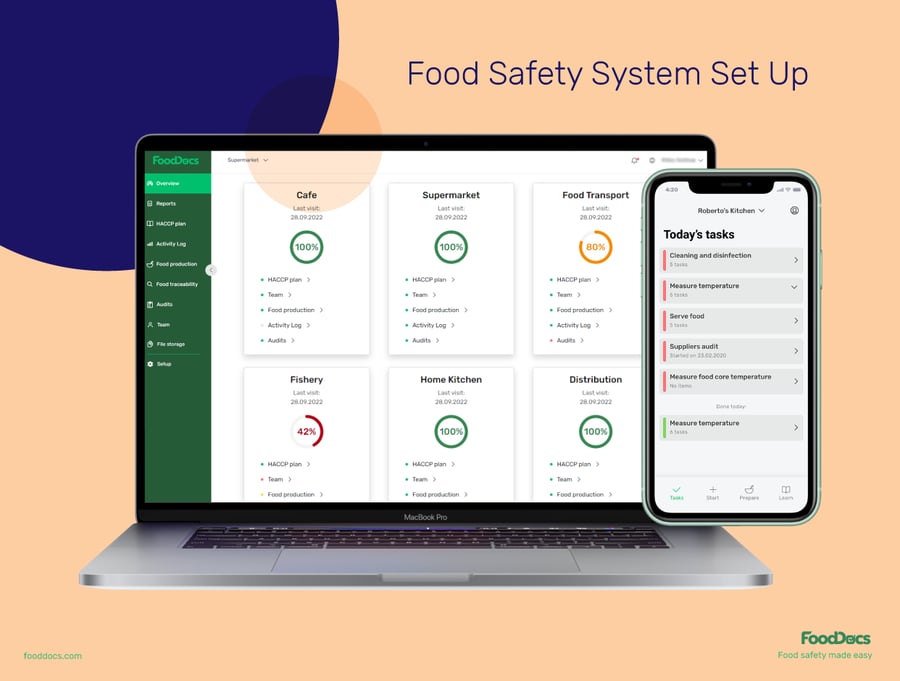
- Set up your own digital Food Safety Management System in just 15 minutes.
- Get a real-time dashboard that provides you with a quick overview of your operations across all branches. You can remotely manage your team and efficiently identify areas that must be immediately addressed.
- Archive all digital information in the dedicated cloud storage for your team. Pull out any digital document at any time and present it to your food safety auditor for verification.
In addition to an easy setup, our smart software can accommodate customizations. You can simply customize the information in your monitoring logs to fit your operations better. As you enter more information, our system gets smarter through the help of a machine-learning program. Through this system, we can serve you better and offer more intuitive solutions.
Start monitoring your food safety operations with our smart and efficient solution.
Use our free 14-day trial and experience our services for free.
